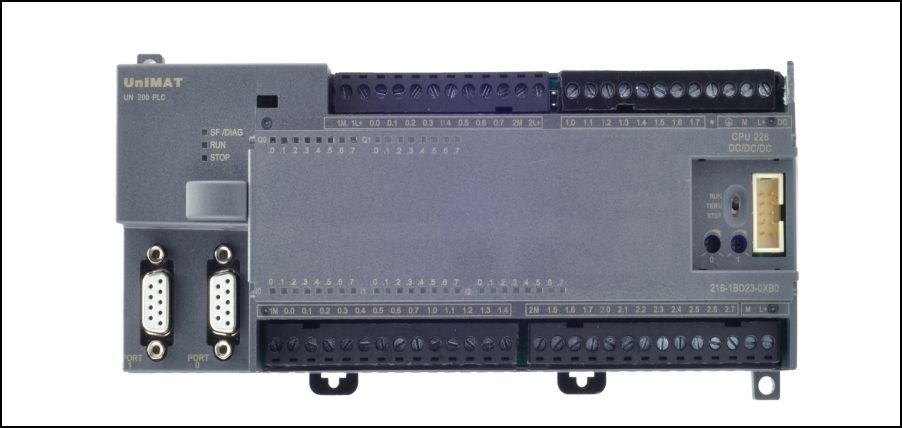PLC (Programmable Logic Controller) is a widely used programmable controller in the industrial field. The application of PLC technology enables digitalization, networking, and automation control of various production equipment, improving production efficiency and work quality. With the continuous improvement of industrial automation, the application scope of PLC is also expanding. Below are some specific application scenarios and case examples of PLC.
- Production Line Control
PLC is widely used in the control of various production lines, such as in the automotive industry, electronics industry, and mechanical manufacturing. PLC can achieve automatic control of various production processes on the production line, such as automatic assembly, processing, packaging, handling, and inspection, thus improving production efficiency and reducing labor costs. For example, in the automotive industry, the body welding production line uses PLC to achieve automatic control and adjustment of body welding, improving both production efficiency and quality while reducing labor costs.
- Robot Control
PLC can be used for robot control in automated production. Through PLC, robots’ movements, feedback control, and autonomous decision-making can be managed, thus enhancing production efficiency and effectiveness. For instance, in the electronics manufacturing field, intelligent robots can automatically assemble and bond electronic components, reducing manual labor, increasing production efficiency, and improving product quality.
- Intelligent Building Control
PLC can be applied in smart building systems for energy management, security monitoring, lighting control, building automation, etc., to achieve energy-saving, safety, and comfort in the building environment. For example, using PLC to control a building’s energy management system can enable energy consumption monitoring and environmental temperature control, improving energy efficiency. Similarly, PLC-controlled intelligent lighting systems can automatically adjust lighting based on human presence, enhancing indoor lighting comfort and saving electricity costs.
- Energy System Control
PLC can be applied in various energy systems, such as pump control, wind power generation control, solar energy control, and generator set control, to achieve efficient energy utilization and automated energy system control. For instance, using PLC to control solar panels allows for automatic tracking of solar energy resources and automatic control of solar panels, optimizing solar energy efficiency and reducing electricity costs.
- Medical Equipment Control
PLC can be applied in the control of medical equipment, such as surgical robots and medical instrument control. For example, using PLC to control a surgical robot allows for automatic operation, control, and adjustment of surgical instruments, improving surgical precision and safety, thus ensuring the quality of surgery and patient safety.
- Environmental Protection Control
PLC can be used in the automation control of various environmental protection equipment, such as wastewater treatment, waste incineration, noise control, and air purification. For instance, using PLC to control waste incineration equipment enables the automatic control and adjustment of parameters such as temperature, time, and oxygen flow, improving the efficiency of waste incineration and enhancing environmental protection benefits.
- Intelligent Logistics Control
PLC can also be applied in smart logistics systems for warehouse management, automated sorting, intelligent handling, and more, improving logistics efficiency and quality. For example, using PLC for warehouse automation management enables automatic warehousing, inventory management, and automatic outflow of goods, improving warehouse management efficiency and quality.
In summary, PLC technology has a wide range of application scenarios. It can be used in various industrial automation controls, intelligent buildings, medical equipment control, environmental protection, smart logistics, and other fields, providing people with safer, more efficient, and environmentally friendly ways of production and living.














